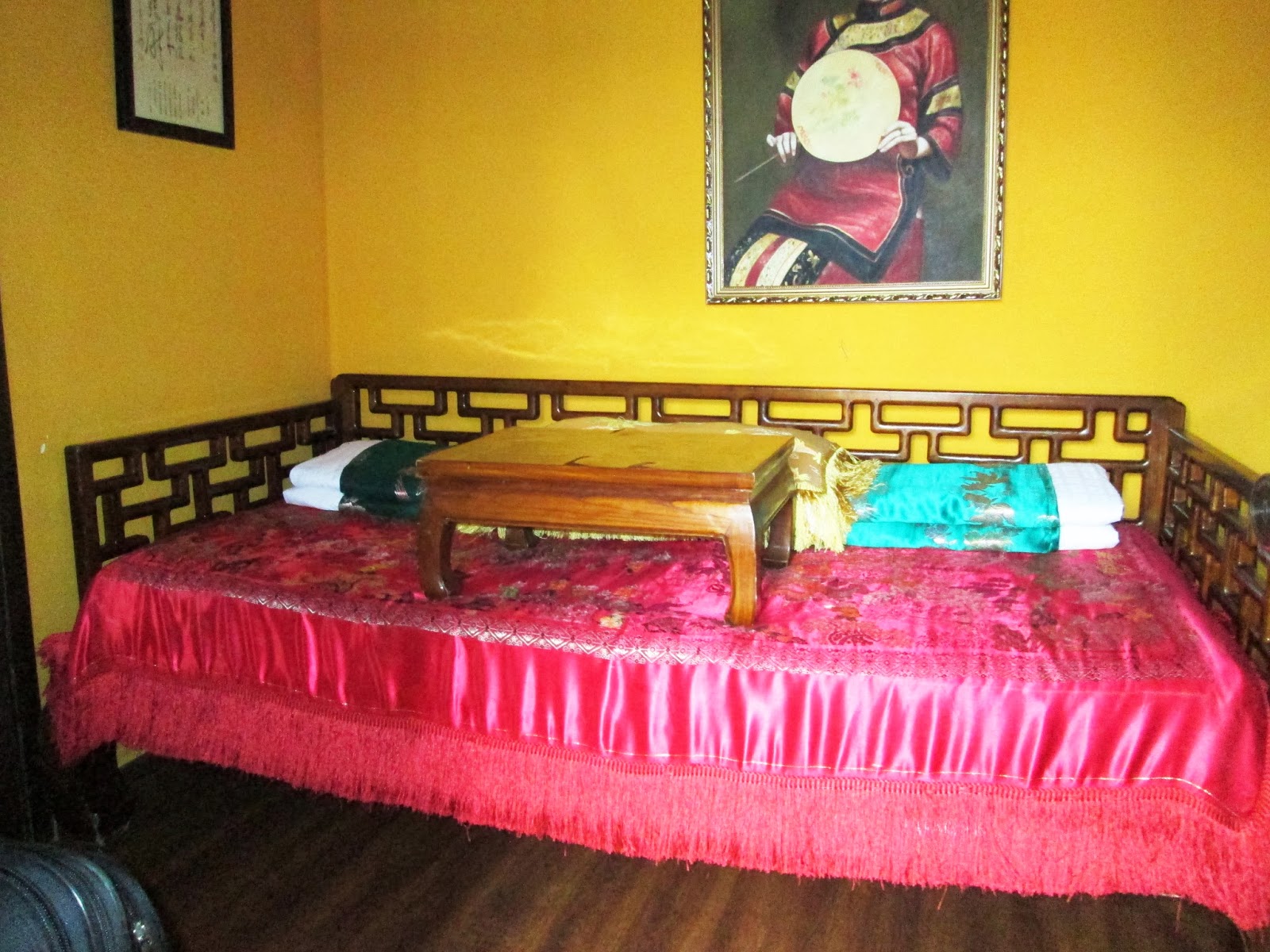MONGOLIA
I’ve shared some of the highlights
of our fall trip: China and a bit of Russia.
So now, we head to Mongolia.
Mongolia, located between Russia and China, is a fascinating country
with a most colorful history.
The Eurasian grassland , the Steepes, covers a region
extending from northern China through Mongolia toward eastern Europe. Steepe dwellers were organized around clan
and tribal units. The most famous of the
Central Asian tribes were the Mongols.
Until the end of the 12thC, the Mongols were a loose confederation of
rival clans. In 1162BCE a young child
was born, who by the age of 20 united the Mongol tribes, his empire reaching
from China to the Caspian Sea. Much has been written about Ghengis Khan and he
is honored everywhere in Mongolia today:
Ghengis as a baby, Ghengis riding a buffalo, Ghengis seated in honor at
the Parliament Building in Ulaan Baatar.
The nomadic pasturalists of Central Asia lived, according to
the Chinese, in the “Land of Felt” as
their world was dominated by a single fabric: woolen felt. Felting is a process in which masses of
loose animal fur or hair form a firm fabric with the application of heat,
moisture and pressure. The fibers are
neither spun nor woven. This is
possible due to the structure of animal hair, wool and fur. The fibers have a scaly surface which allow
them to adhere to each other when manipulated.
This is why keeping your sofa pet hair free is so difficult. The process used in the ancient times by the
nomadic tribes has not changed significantly.
In Genghis: Birth of an Empire, Conn Iggulden, Delacorte
Press, 2007, pg 71-72, there is a description of felt-making .”The smallest
children carried buckets full of water to sprinkle on each layer of woolen
fleeces, keeping them constantly moist…boys tied the fleeces onto upright skins
on frames and beat them with long, smooth sticks for hours…After the fleeces
had been thrashed into softness, the women used the width of their outstretched
arms to measure out one “ald” (old Mongolian measure, approximately 160 cm),
marking the fleeces with chalk. When
they had their width, they stretched them into felting cloths, smoothing and
teasing the snags and loose fibers until they resembled a single, white mat. More water helped to weigh the rough felt down
in layers, but there was real skill in finding the exact thickness…When the
mats were smooth and regular ,a pony was backed up and the great expanse of
white wool rolled into a long
cylinder.” The pony then pulled the
cylinder along the ground while the roll was beatened, further.
 |
This cartoon of ancient Mongolian life is available in many souvenir shops
It portrays the llet-making process described above. |
Felt was used in clothing along with animal pelts and, of
course, in the construction of yurts (called “gers” in Mongolia) which were used
as their primary shelters. Yurts are
everywhere in Mongolia, even today, and I will present you with yurts in
Mongolia: Part 2.
Today felt is manufactured from man-made fibers which are
stronger than natural fibers. A machine called a finishing range sets the width
and the entire process is one-step which includes heat, pressure and chemicals. For the craftsman, woolen felt can be
produced at or in the studio and there
are many instructions available.
However, haven’t we all created a Barbie sweater from mistakenly washing
and drying a woolen sweater?

















